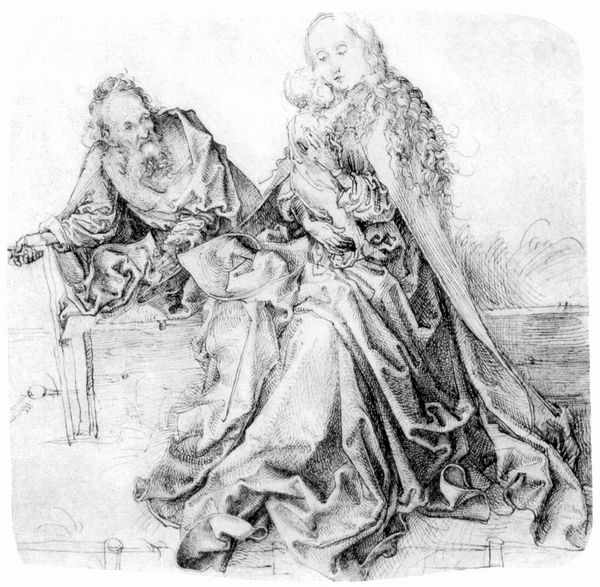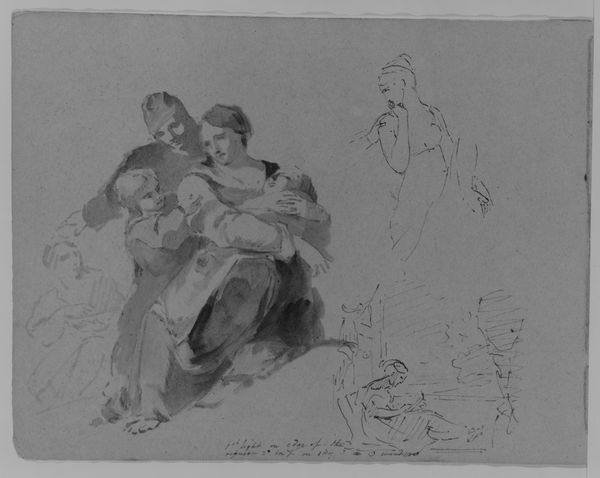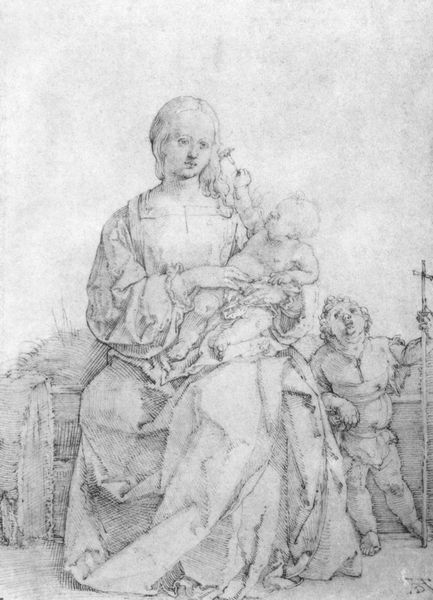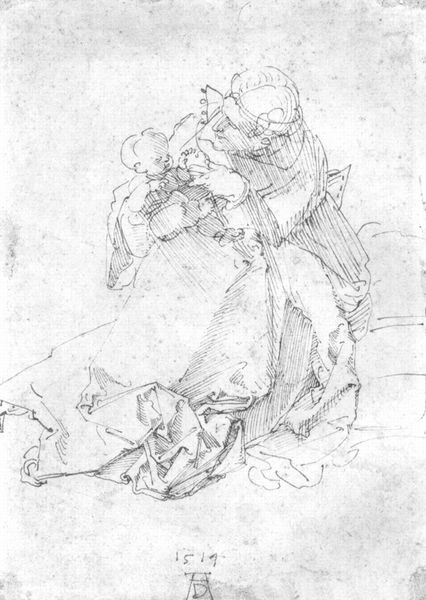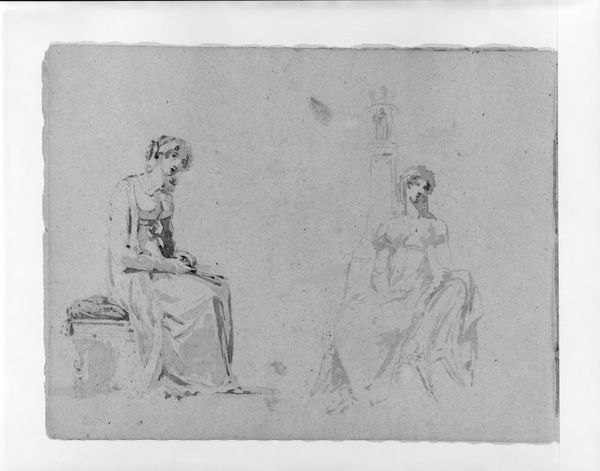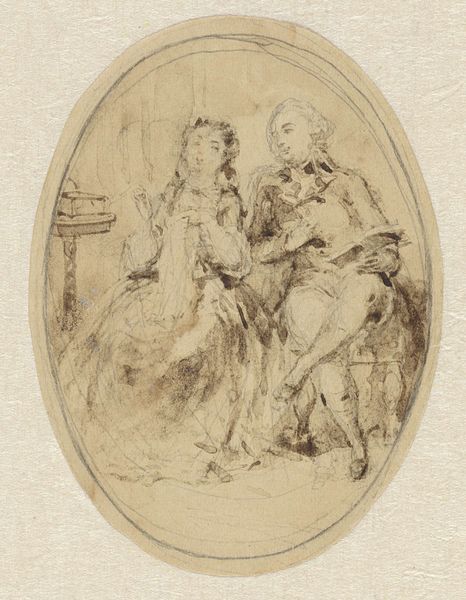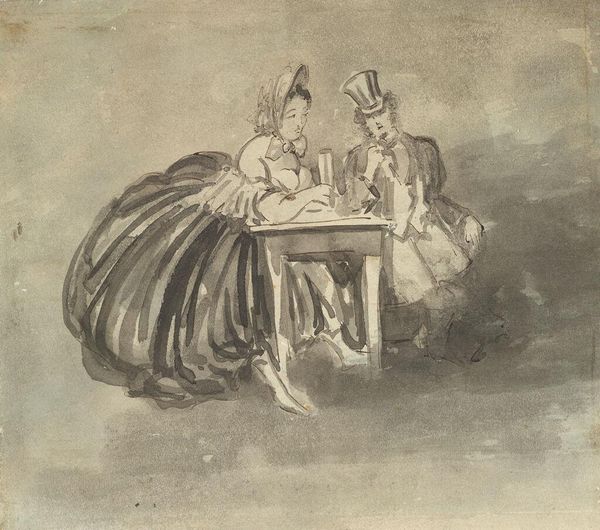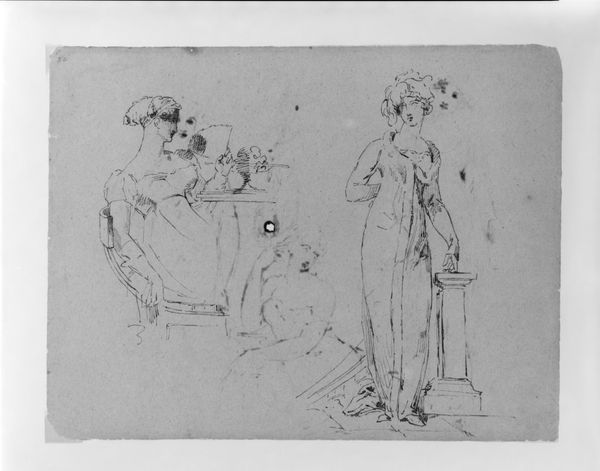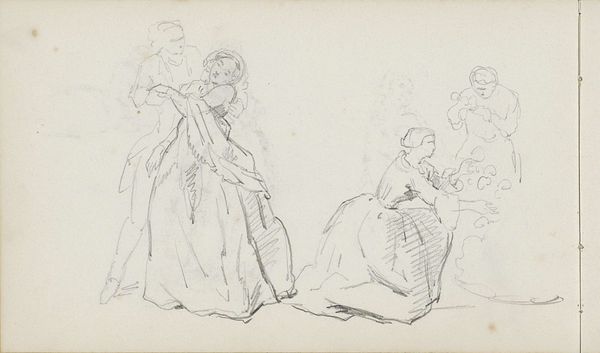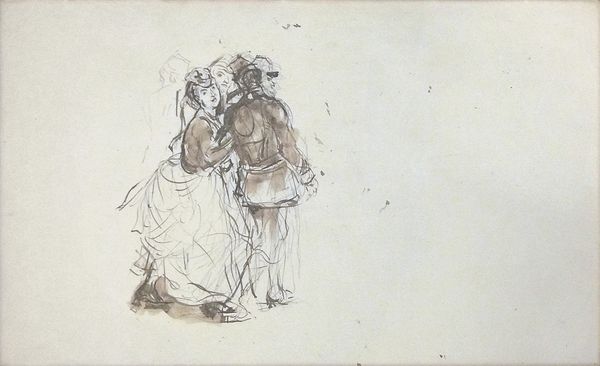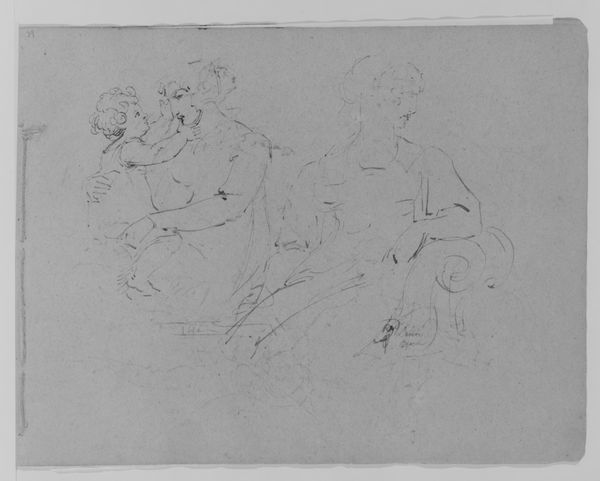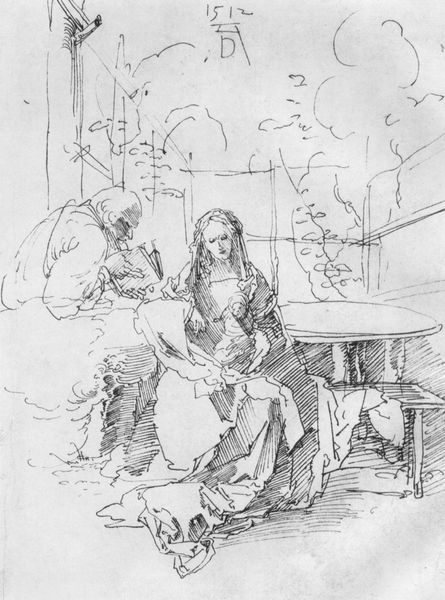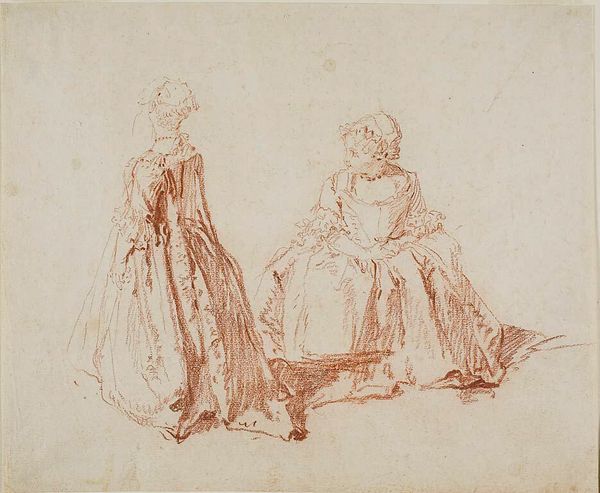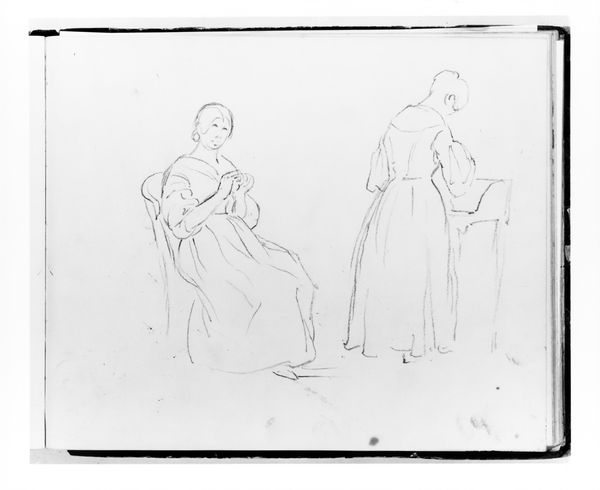
drawing, pencil
#
portrait
#
drawing
#
pencil sketch
#
figuration
#
11_renaissance
#
sketch
#
pencil
#
history-painting
Copyright: Public domain
Albrecht Dürer created "Anna selbdritt" as a sketch around 1512, using black ink. The work depicts Saint Anne, her daughter the Virgin Mary, and the infant Jesus. Dürer lived through a time of significant religious and social change during the Reformation. "Anna selbdritt," which translates to "Anne herself the third," was a popular subject in the late Middle Ages, emphasizing the lineage of Christ. In this tender drawing, the three generations are closely linked, conveying the intimate bond of family. Interestingly, Dürer’s delicate lines and attention to detail also capture the changing roles of women during the Renaissance, caught between traditional expectations and emerging senses of self. The emotional weight of familial expectations is evident in the way Durer subtly portrays the women's care for the Christ child. The sketch invites us to reflect on the complex interplay between the personal and the historical, and on the ways in which identities are shaped by cultural forces.
Comments
No comments
Be the first to comment and join the conversation on the ultimate creative platform.
